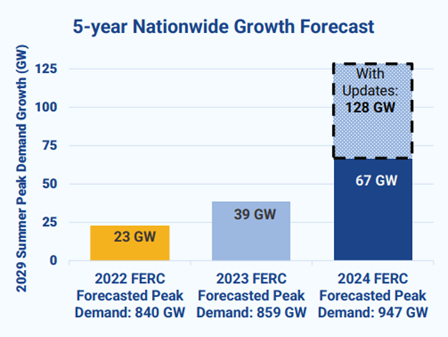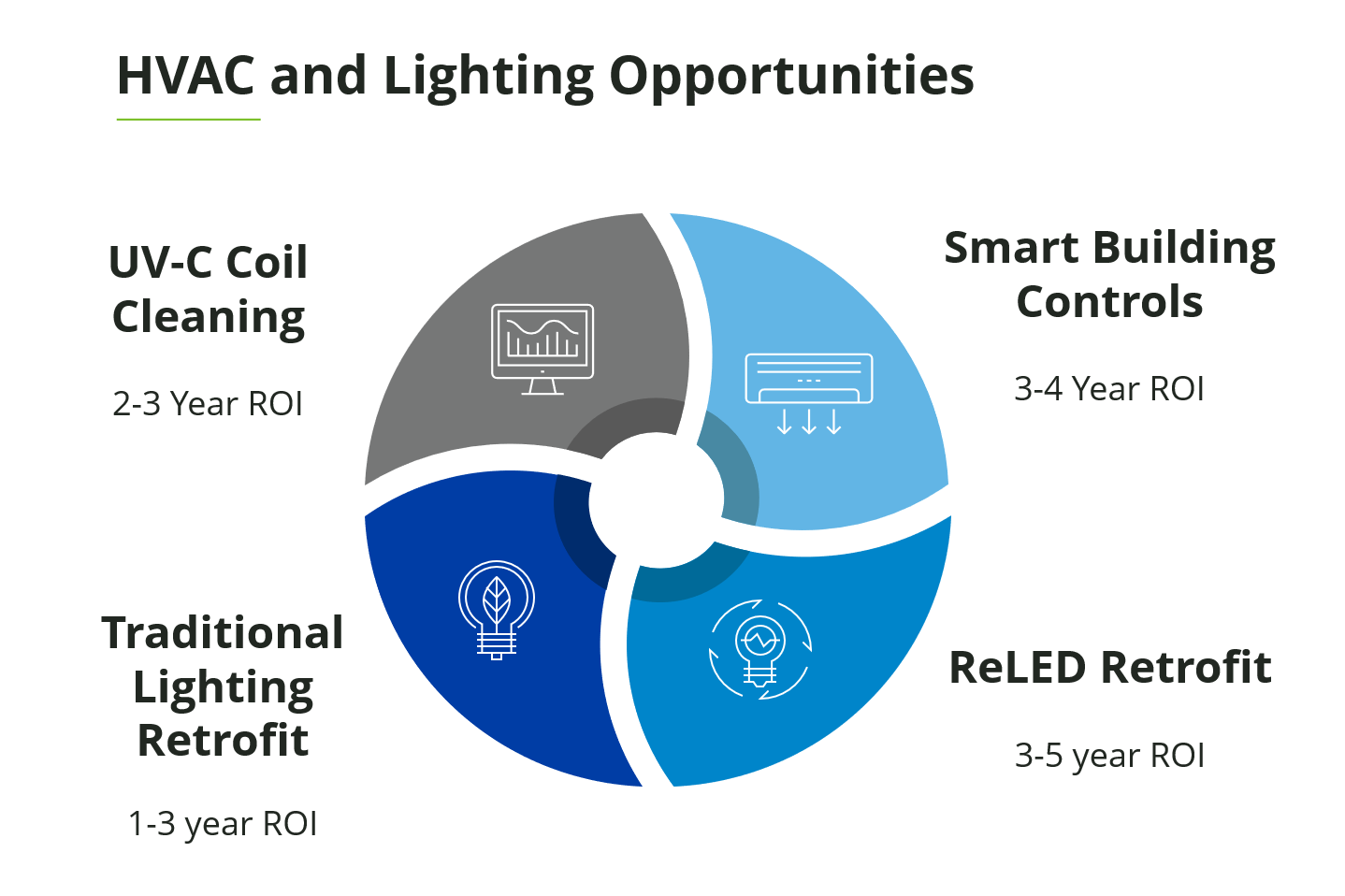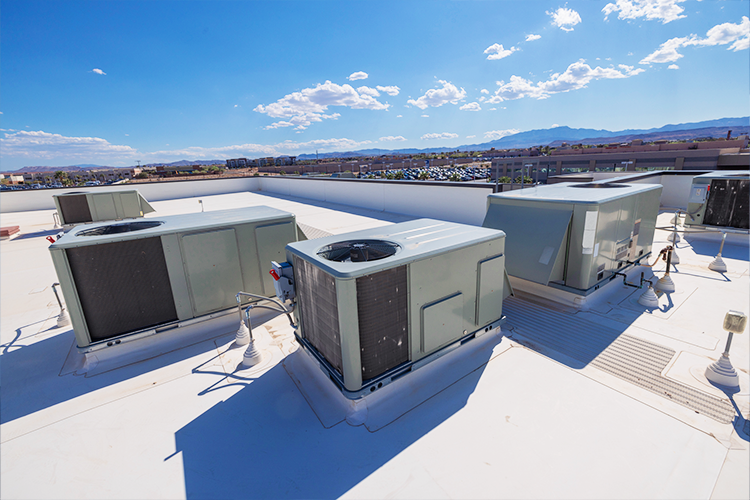Four Energy Efficiency Trends That Will Complicate Your Life

Over the past few years, Energy Management Collaborative (EMC) has identified and tracked four key trends we believe every business needs to address. At the very least, you should be aware of how these trends will affect your future. If you choose not to address them, they’re destined to make your already complicated life even more complex. That’s why now is the right time to deal with these issues and get ahead of the problems they’ll cause.
TREND #1: Fluorescent lamp bans
Fluorescent lighting has been the standard for American business for nearly 100 years. But this form of lighting presents some significant problems. They’re not very energy efficient; they buzz; they can’t be directed or dimmed; they contain mercury; and now they’re being banned in many states across the U.S.
Currently 16 states and Canada have either already implemented bans or will have bans or restrictions in place by the end of 2026. Further bans are expected from the rest of the country but, for now, you face a patchwork quilt of regulations from state to state.
In addition, the federal government has been in the process of implementing regulatory standards to promote energy efficiency. Lighting is one of them. For example, the typical home table lamp has an efficiency standard of 45 lumens per watt. By 2028, that federal standard will have increased to nearly 130 lumens per watt. That is significant.
If you have properties in locations across the country, you’ll need to make sure you’re up to date on when bans go into effect. If you choose to stick with fluorescents, you will find that supplies are extremely limited and will soon be non-existent. As the bans are enacted, you could also face pricing uncertainties when you retrofit from fluorescent to LED and, if you don’t act sooner rather than later, incentives that make it easier to change over will more than likely be phased out by the time you make the decision.
Why now is the time to assess your lighting system.
You can conduct a self-audit, but for a lot of companies that can be time-consuming and difficult. You can also work with experts to produce a detailed audit. Once you have the information you need, develop a strong business case for the switch and present your findings to the organization’s leadership team. Part of that presentation is making sure you’re making a retrofit to LED a priority.
Trend #2: Rising electricity prices
Over the past 25 years, the annual compound annual growth rate (CAGR) for electricity prices was around 2.5%, which held steady for most of that time. Over the past two years, that increase is now at 9%—and the rise is expected to continue.

Image Source: eia.gov

Image Source: Grid Strategies
Part of the increase is due to the growth of clean energy sources, which are creating new infrastructure that has to be paid for by someone. And, for the most part, that’s going to be the consumer. But the increase is also caused by the emergence of energy intensive industries that promote the overall electrification of heating, cooling, vehicles and more.
In addition, there is a growing demand for data centers along with server farms that would feed artificial intelligence operations and crypto companies. And the entire U.S. energy infrastructure will have to be upgraded at a significant cost utilities will pass on to customers.
Demand is predicted to continue going up along with the rise in costs, which means your existing lighting will cost you more. So, the sooner you can do whatever it takes to lower your overall energy costs, the better.
More than ever, it’s necessary to ensure your buildings are using energy as efficiently and wisely as possible. That requires balancing long-term sustainability and cost savings with the short-term sacrifice of investing in energy efficiency technology.
Many organizations are practicing some form of energy conservation but that drive for efficiency is often being done ad hoc and needs to be a more integral part of an overall strategy.
What can you do to offset rising electricity prices?
Here are a few practical steps you can take. First, gather detailed energy use data and work with your utility to explore rate plan options that could optimize your costs. You can also switch to a Time-of-Day plan if you have significant hours of evening and weekend operations. If you have operational flexibility, you can take advantage of off-peak pricing and avoid high peak periods such as midday during the summer months. At Energy Management Collaborative, we have the skills and resources to help you analyze your usage, review options and make the most informed decisions.
Some of these strategies can produce large savings in some markets and, if they’re done with smart building controls, the building occupants might not even notice the difference.
Trend #3: Prevalence of building performance standards
Federal and local energy codes set a minimum requirement for new construction. But there are now Building Performance Standards (BPS) for existing structures. They set limits on how much energy a building can use, based on building type and size.
Six states and more than 60 cities have already committed to enacting BPS with dozens more currently under consideration. That further emphasizes the complexity of complying with multiple standards, including lighting, if you have locations in multiple states. In fact, a single site can be required to comply with regulations at the city, county and state level.
There will be significant fines for non-compliance. For example, Boston’s fine is $1,000 per day for buildings 35,000+ square feet that don’t comply. It will be a tough challenge for cities and states to police and enforce non-compliance but assuming that won’t happen could be costly.
Which of your properties are already affected by BPS?
Which ones may soon be? How are you going to navigate the current patchwork of regulations?
To find the shortest route to assuring compliance, you need to develop a plan of action. That requires identifying properties that will be impacted, thoroughly research regulatory requirements and then develop a strategy to ensure compliance. You can also bring down usage by retrofitting your operation with more efficient equipment and installing onsite generation such as solar panels.
Trend #4: The need for building and energy management system upgrades
If your Building Management System has been around for at least 8-10 years, you’re more than likely working with outdated technology that is inefficient, vulnerable to security breaches and not able to integrate with modern building automation and smart technologies.
Building Management Systems (BMS) that haven’t been properly upgraded can result in system failures and inevitable energy waste. The same problems exist for legacy energy management systems, including the inability to integrate with newer technology, inefficient data handling, wasting energy and unnecessarily costing you money.
If your legacy BMS is more than eight years old, the manufacturer is probably not supporting it. Security patches and updates aren’t issued anymore, which creates a huge cyber-security risk.
47% of U.S. businesses have suffered a significant revenue loss as the result of a data breach and the Department of Energy has discovered that a company can cut their energy costs by as much as 29% if they upgrade their BMS or install a new one. Those facts alone make the need to upgrade a BMS even more urgent.
As we mentioned earlier, putting off the decision to upgrade your BMS will only wind up costing you money and create more problems. Installing an open protocol BMS system gives you the foundation to more effectively and efficiently implement new and sometimes rapidly changing regulations. It will optimize your energy use, enhance your protection against cyber-threats, allow you to integrate with a wide range of Internet-enabled and AI-driven technologies to help you save money, be compliant and more.
What are the next steps to upgrade your BMS?
To help you make the case for investing in a new BMS, work with an expert consultant to do a thorough auditing of your current system to identify all vulnerabilities, as well as determining goals, objectives and requirements for any new system.
All of the trends we’ve reviewed here will have a profound negative effect on your operations...unless you choose to address them. Our recommendation is that the sooner you review your current system and decide what your options should be, the better off you’ll be both functionally and financially.
EMC can be a valuable partner in assessing your current situation, helping you design your future and determining the best ways to implement your investment to ensure that you are compliant, up-to-date, and as secured for the future as possible. If you have any questions about the information in this article or your energy management in general, please reach out to us.
Since 2003, EMC has successfully implemented thousands of projects annually including lighting, smart building controls, HVAC optimization, electric vehicle supply equipment, ongoing maintenance and warranty of these systems. In fact, we ‘ve saved customers more than 22 billion kilowatt hours. Contact us today to analyze your current BMS to help you minimize the impact of rising energy rates.




